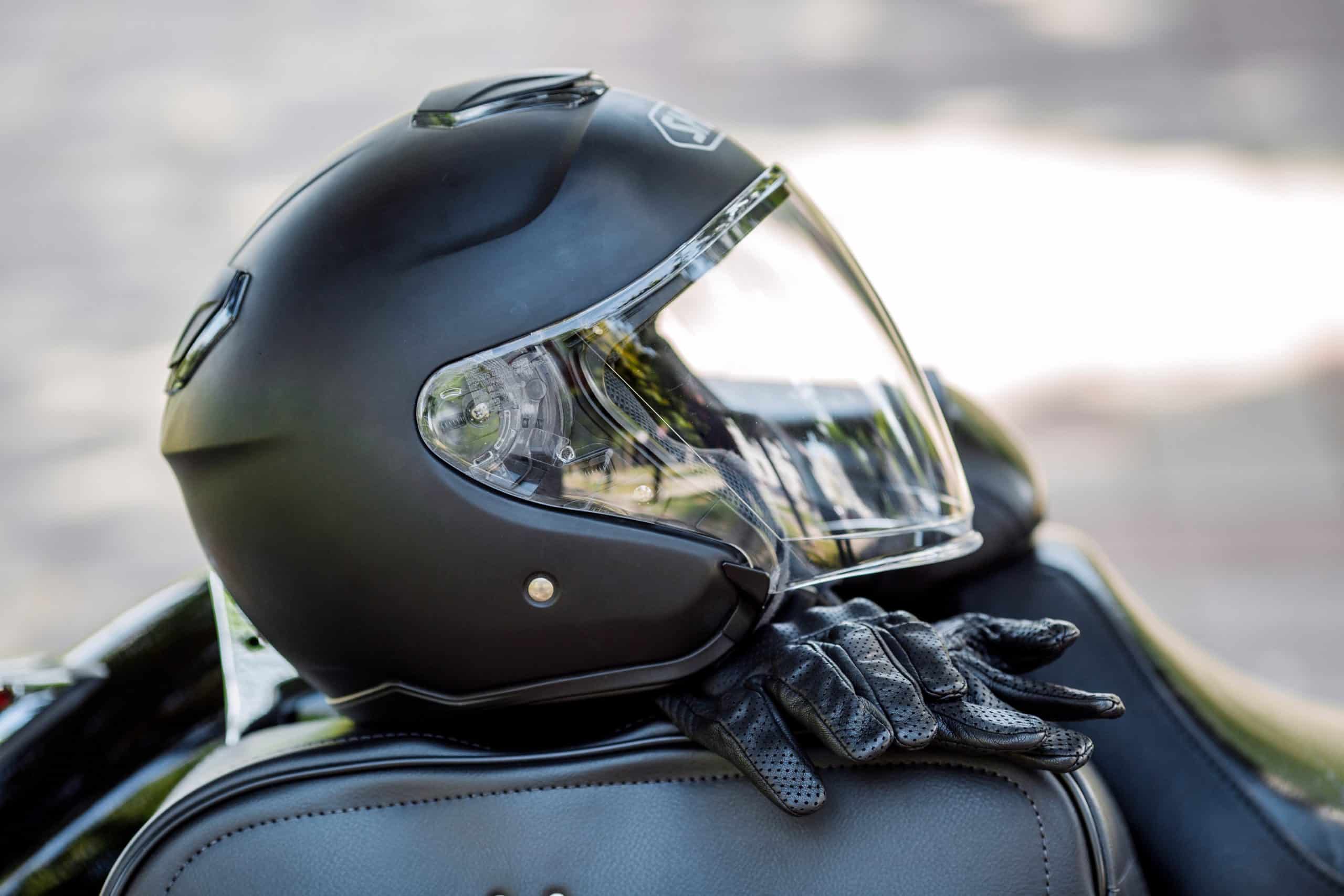Key Takeaways
RECENT POSTS
Categories
Springtime Riding Safety: Most Common Motorcycle Accident Injuries
Key Takeaways

Feel that thrill? It's the unmistakable rush of cruising down the open highway, your motorcycle hugging each curve, the wind a constant companion. As the sun asserts its presence and the days bask in warmth, the call of the road is irresistible. You're ready to kickstart the engine, feel the heartbeat of your bike, and surrender to the exhilarating freedom that only riding can offer. But let's switch gears for a moment—while riding is exhilarating, it's also laced with risks.
You, the seasoned rider, are no stranger to the road's unpredictability. Your experience and vigilance are invaluable, yet the unexpected still lurks around every corner. Knowledge is your best defense. Being aware of potential mishaps and injuries that could occur is not just prudent—it's essential. Smart riding transcends skill; it's about choices. The right gear, the right attitude, and the right approach to each ride can transform your journey from risky to rewarding. Remember, the best rides are those where the joy of the journey meets the wisdom of safety.
10 Common motorcycle accident injuries
Understanding the various types of injuries that occur in a motorcycle accident is essential for riders to take proper safety precautions and make informed decisions about their riding habits. The most common motorcycle accidents include:
Road Rash
Road rash is a common injury that occurs when a motorcycle rider falls and slides across the surface of the road. The injury that results is an abrasion from friction between the rider's skin and the pavement. Injuries from road rash can range from mild to severe, depending on the length and severity of your contact with the road, as well as the speed you were going when you were knocked off your motorcycle.If you’re lucky, road rash may only cause minor scrapes, bruises, or irritation; although, in more severe cases, a layer of your skin can be completely scraped away, exposing the underlying tissue and muscle. Road rash causes significant pain, swelling, and bleeding, and often requires medical attention, including treatments to prevent infection. In the event of a crash or fall, it is important to seek medical attention as soon as possible and keep the wound clean and protected to avoid infection.
Fractures
A fracture is a break or crack in a bone, and can range in severity from a hairline fracture to a complete break. In motorcycle accidents, fractures often occur as a result of the rider being thrown from the bike or colliding with another object. The impact of the crash can cause significant force to be applied to the rider's body, leading to fractures in bones such as the arms, legs, hips, and pelvis.
Motorcycle riders are particularly vulnerable to fractures due to the lack of protection provided by the bike, since motorcycle riders are exposed to the full force of the impact. Fractures can be very painful and can require a significant amount of time to heal. Treatment for fractures may involve immobilizing the affected limb with a cast or brace, and in some cases, surgery may be necessary to realign the bones. They can also lead to long-term complications such as chronic pain, reduced mobility, and arthritis.
Head Injuries
Head injuries are a common and potentially serious type of injury that can occur in motorcycle accidents. The head is particularly vulnerable in motorcycle accidents because the rider is often exposed without any protective barriers to absorb or deflect the impact of a collision. The best way to prevent a head injury is by wearing the proper protective gear, like a helmet; yet, this does not guarantee total safety from a head injury when hit with extreme force. Symptoms include loss of consciousness, dizziness, headache, confusion, difficulty speaking or understanding speech, and memory loss. Sometimes symptoms may not appear until several hours or even days after the accident. In addition to the physical symptoms, head injuries can also have long-term consequences such as cognitive impairment, personality changes, and chronic headaches.
Head injuries can range in severity from minor concussions to traumatic brain injuries (TBI), which can be life-threatening. In fact, motorcycle accidents are a leading cause of TBIs. A TBI can occur when the brain is forcefully jolted or shaken inside the skull, which can cause bruising, bleeding, or swelling of the brain tissue. The severity of a TBI can vary greatly, depending on the force of the impact and the location of the injury.
Spinal Cord Injuries
The spinal cord is a bundle of nerves that runs down the back and is responsible for transmitting signals between the brain and the rest of the body. It can be injured when the rider's back is impacted or twisted in a way that causes damage to the nerves. Spinal cord injuries can range in severity from mild to severe. This can result in partial or complete paralysis.
The symptoms of a spinal cord injury can vary depending on the location and severity of the injury, and includes loss of sensation, loss of movement, difficulty breathing, and incontinence. Treatment involves immobilization of the area to prevent further damage, and includes surgery to stabilize the spine. Rehabilitation may be necessary to help the patient regain movement and strength in the area. Spinal cord injuries can have an impact on a person's quality of life, and may require ongoing medical care and support.
Soft Tissue Injuries
Soft tissue injuries result from the force of impact in a motorcycle accident, and can range in severity from minor bruises to more serious injuries such as tears or ruptures of the tendons or ligaments. Soft tissue includes muscles, tendons, ligaments, and other connective tissues that surround and support the bones and joints in the body.
Treatment for soft tissue injuries typically involves rest, ice, compression, and elevation of the affected area to reduce swelling and pain. In severe cases, physical therapy or surgery may be necessary to repair the damaged tissue and restore function.
Internal damage
Internal damage refers to damage that occurs to organs or other internal structures within the body. These include injuries such as internal bleeding, organ damage, and internal fractures. Internal injuries can be difficult to detect and may not be immediately apparent after a motorcycle accident. These injuries can be life-threatening if left untreated. Some common types of internal injuries are internal bleeding, organ damage, and internal fractures.
Treatment for internal injuries typically involves prompt medical attention to assess the extent of the damage and provide appropriate treatment. This may involve surgery to repair damaged organs or stop internal bleeding, as well as other supportive care such as oxygen therapy or medication to manage pain and other symptoms.
Burns
Burns can result from contact with hot surfaces such as the engine, exhaust pipes, or exposure to flames in the event of a fire during an accident. There are three main types of burns: first-degree burns, second-degree burns, and third-degree burns.
Burns can be extremely painful and may require medical attention to manage pain and prevent infection. Treatment may include topical ointments or creams to reduce pain and promote healing, or more advanced treatments such as skin grafts for more severe burns.
Amputations
Amputations occur when a limb or body part is completely or partially severed from the body, often as a result of the force of impact in a collision. They have serious physical and psychological consequences for the victim, including long-term disability and emotional trauma. Treatment for amputations typically involves surgical intervention to clean and repair the injury, as well as rehabilitation to help the individual adjust to life with a missing limb.
Prompt medical attention is critical to prevent infection and other complications. Rehabilitation can include physical therapy to help the individual adjust to life with a missing limb, as well as psychological counseling to address the emotional trauma that can accompany such a devastating injury.
Eye Injuries
Eye injuries can range from minor cuts and bruises to more serious injuries such as a detached retina, which can result in permanent vision loss. Riders are vulnerable to eye injuries because they are exposed to debris and other objects that are thrown up by other vehicles or the road itself. The impact of a collision can also cause eye injuries.
In the event of an eye injury in a motorcycle accident, prompt medical attention is critical to prevent further damage and preserve vision. Treatment may include cleaning the affected area, applying medication or eye drops, or surgical intervention depending on the severity of the injury.
Muscle Injuries
Muscle injuries can range from minor strains and sprains to more severe injuries such as muscle tears or ruptures. This happens when muscles are stretched or torn due to the force of impact in a collision or due to sudden movements or jolts during the accident. Common areas of the body that are susceptible to muscle injuries in motorcycle accidents include the arms, legs, back, and neck.
Treatment for muscle injuries typically involves rest, ice, compression, and elevation (known as the RICE method) to help reduce pain and swelling. Physical therapy and rehabilitation may also be necessary to help the individual regain strength and range of motion in the affected area.
As with any type of vehicle operations, it is important for motorcycle riders to take proper safety precautions when operating their vehicle. Another way to prevent riders' injuries is to wear protective gear to reduce the risk of these and other injuries in the event of a motorcycle accident.
How can a rider prevent suffering from an accident injury?

There are many ways that motorcyclists can prevent suffering from an accident:
Wear protective gear
Wearing proper protective items like a helmet, jacket, pants, gloves, and boots can help minimize the risk of injury. These items are designed to absorb the impact of a collision and protect the rider from abrasions, cuts, and burns.
Ride defensively
You should be aware of your surroundings, anticipating potential hazards, and taking proactive measures to avoid accidents. This includes maintaining a safe following distance, using turn signals, and avoiding reckless behavior.
Stay sober
Riding under the influence of drugs or alcohol impairs your ability to operate a motorcycle safely, so you should never ride under the influence.
Maintain your motorcycle
Regular maintenance of your motorcycle can help prevent accidents caused by mechanical failures, which includes checking the brakes, tires, lights, and other parts of the vehicle before every ride.
Take a motorcycle safety course
A motorcycle safety course for motorcyclists can develop essential skills for safe riding, such as defensive driving techniques, hazard avoidance, and emergency maneuvering. If you follow the safety tips above, then you can reduce your risk of suffering from an accident injury while operating your motorcycle.
Wettermark Keith: Motorcycle Injury Attorneys
When you’re injured in a motorcycle accident, you shouldn’t have to fight for your case alone; instead, contact one of our skilled motorcycle accident attorneys. Our lawyers commitment is to you first, which is why we don’t require any payment unless we win your case. Our attorneys believe that you deserve justice and the most compassionate, hard-working legal representation available. Don’t let the statute of limitations pass by without taking action to receive compensation for your injury.
Our firm has built a positive reputation in the industry through years of hard work, dedication, and real results. With offices in Alabama, Tennessee, and Florida, Wettermark Keith remains one of the top personal injury firms in the Southeast. Our lawyers practice with care and compassion, telling our clients stories and making their voices known. Our lawyers' success is in our strong relationships with our clients, based on constant communication and an unwavering dedication to truth and trust. Winning cases isn’t our goal - caring for you is. Winning is just how we show it. Do not hesitate to contact a motorcycle accident attorney from Wettermark Keith if you have been injured in an accident.
Frequently Asked Questions
The most common motorcycle crash injury is road rash, which is when a rider's skin makes contact with the road surface. Road rash can range from minor scrapes and bruises to deep cuts and abrasions that can lead to serious infection for motorcyclists. Road rash can cause damage to skin tissues and muscles, requiring extensive medical treatment. Other common injuries in motorcycle accidents include fractures, head injuries, spinal cord injuries, and soft tissue injuries. It is important for riders to wear protective gear, such as a helmet, gloves, and durable clothing, to help prevent or minimize the severity of injuries in the event of an accident.
Ready to work together? Contact us today for a free consultation.
HERE'S WHAT TO DO NEXT
If you or a loved one have been injured and think you might have a case, call us now for a free consultation.


